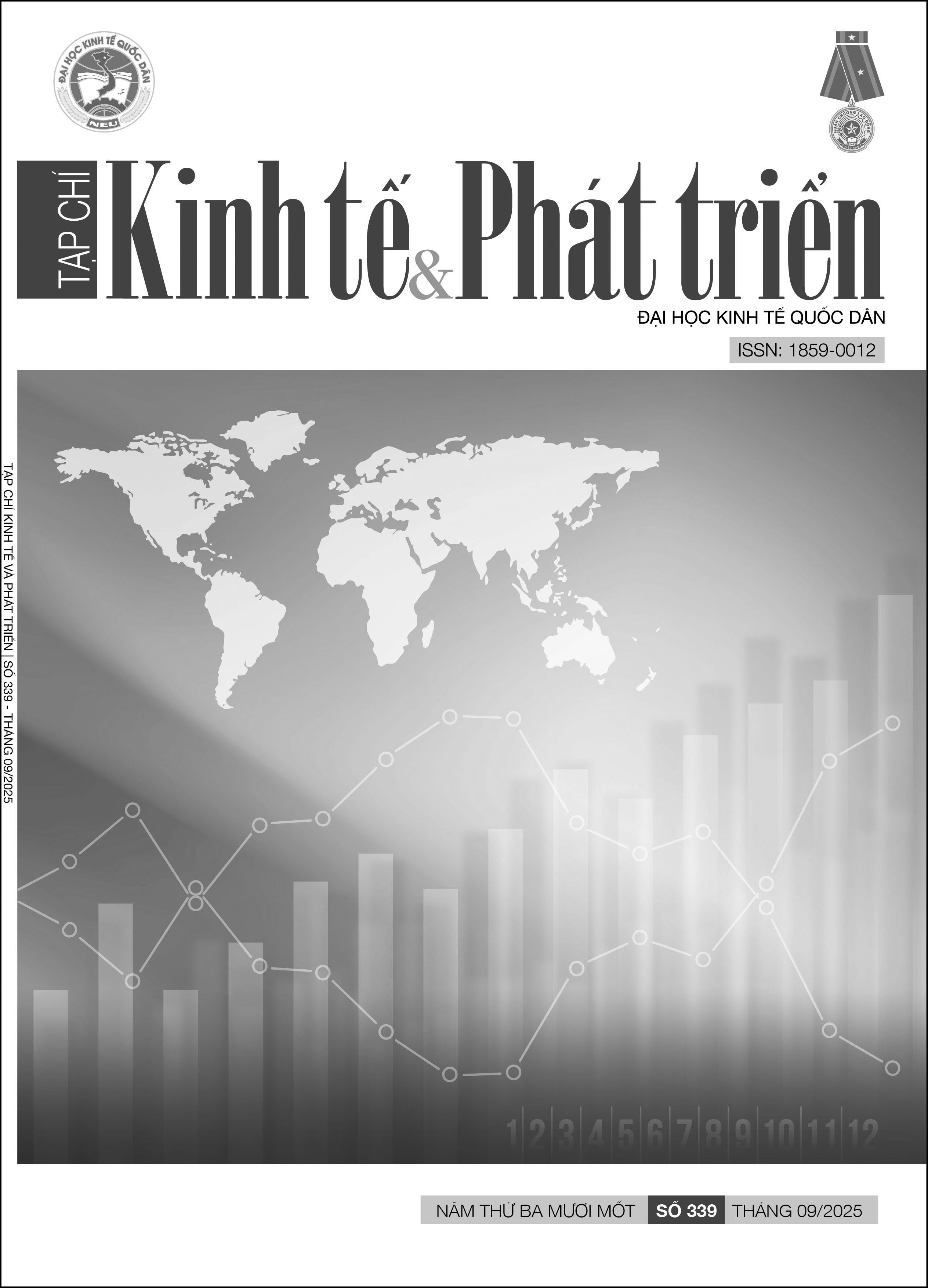Độ lệch chiến lược và chi phí sử dụng nợ vay: Vai trò điều tiết của lãnh đạo cấp cao công ty
DOI:
https://doi.org/10.33301/JED.VI.2583Từ khóa:
Ban giám đốc, CEO, chi phí sử dụng nợ vay, độ lệch chiến lượcTóm tắt
Nghiên cứu kiểm định tác động của độ lệch chiến lược đến chi phí sử dụng nợ vay của các doanh nghiệp niêm yết trên thị trường chứng khoán Việt Nam và xem xét vai trò điều tiết của lãnh đạo cấp cao công ty đối với mối quan hệ giữa độ lệch chiến lược và chi phí sử dụng nợ vay từ năm 2013 -2024 bằng phương pháp ước lượng GLS. Kết quả cho thấy việc công ty gia tăng sử dụng độ lệch chiến lược khác biệt so với ngành có tác động ngược chiều đến chi phí sử dụng nợ vay doanh nghiệp. Ngoài ra, tác động này giúp doanh nghiệp có được lãi suất vay thấp thêm hai năm nữa. Bên cạnh đó, tuổi đời của CEO, tuổi đời trung bình của Ban giám đốc công ty đóng vai trò điều tiết và làm suy yếu đi tác động ngược chiều của độ lệch chiến lược đến chi phí sử dụng nợ vay ở các doanh nghiệp Việt Nam, không chỉ ở thời điểm công ty thực thi độ lệch chiến lược mà còn ảnh hưởng sau đó thêm hai năm nữa.
Tài liệu tham khảo
Bouvard, M., & Lee, S. (2020). Risk Management Failures. The Review of Financial Studies, 33(6), 2468-2505. https://www.jstor.org/stable/48574396.
Chen, M.-J., & Miller, D. (1994). Competitive Attack, Retaliation and Performance: An Expectancy-Valence Framework. Strategic Management Journal, 15(2), 85-102. https://www.jstor.org/stable/2486865.
Ding, R., Liu, M., Wang, Y., & Wu, Z. (2022). Can Family Involvement Be a Substitute for Executive Inside Debt in Lowering the Cost of Bank Loans? A Behavioral Agency Perspective. Review of Corporate Finance, 2(4), 819-860. https://doi.org/10.1561/114.00000031.
Gao, H., Wang, J., Wang, Y., Wu, C., & Dong, X. (2020). Media Coverage and the Cost of Debt. Journal of Financial and Quantitative Analysis, 55(2). https://doi.org/10.1017/S0022109019000024.
Hambrick , D. C., & Schecter, S. M. (1983). Turnaround Strategies for Mature Industrial - Product Business Units. The Academy of Management Journal, 26(2), 231-248. https://www.jstor.org/stable/255972.
Hambrick, D. C., & Mason, P. A. (1984). Upper Echelons: The Organization as a Reflection of Its Top Managers. The Academy of Management Review, 9(2), 193-206. https://doi.org/10.2307/258434.
Hambrick, D. C. (2007). Upper Echelons Theory: An Update. The Academy of Management Review, 32(2), 334-343.
Huỳnh Lê Yến Nhi & Hoàng Trọng Bình (2023). Nghiên cứu về Quản lý thu nhập, chiến lược kinh doanh và rủi ro phá sản: bằng chứng thực nghiệm tại Việt Nam. Tạp chí Khoa học & Công nghệ, 63(3), 16-26. https://doi.org/10.46242/jstiuh.v63i03.4817.
Lant, T. K., Milliken, F. J., & Batra, B. (1992). The Role of Managerial Learning and Interpretation in Strategic Persistence and Reorientation: An Empirical Exploration. Strategic Management Journal, 13(8), 585-608.
Miles, R. E., Snow, C. C., Meyer, A. D., & Coleman, H. J. (1978). Organizational Strategy, Structure, and Process. The Academy of Management Review, 3(3), 546-562. https://doi.org/10.2307/257544.
Mintzberg, H. (1978). Patterns in Strategy Formation. Management Science, 24(9), 934-948. https://doi.org/10.1287/mnsc.24.9.934.
Nguyễn Vĩnh Khương & Nguyễn Thanh Liêm (2021). Tác động của chiến lược kinh doanh đến hành vi quản trị lợi nhuận: nghiên cứu thực nghiệm tại Việt Nam. Tạp chí Kinh Tế & Phát triển, 289, 14-23.
Tang, J., Crossan, M., & Rowe, W. G. (2011). Dominant CEO, Deviant Strategy, and Extreme Performance: The Moderating Role of a Powerful Board. Journal of Management Studies, 48(7), 1479-1503. https://doi.org/10.1111/j.1467-6486.2010.00985.x.
Xia, C., Yang, J., Yang, Z., & Chan, K. C. (2023). Do directors with foreign experience increase the corporate demand for directors' and officers' liability insurance? Evidence from China. Economic Modelling, 119, 106146. https://doi.org/10.1016/j.econmod.2022.106146.
Ye, Z., Shahab, Y., Riaz, Y., & Ntim , C. G. (2023). Strategic deviation and the cost of debt financing. Economic Modeling. https://doi.org/10.1016/j.econmod.2023.106371.
Zajac, E. J., & Kraatz, M. S. (1993). A Diametric Forces Model of Strategic Change: Assessing the Antecedents and Consequences of Restructuring in the Higher Education Industry. Strategic Management Journal, 14, 83-102. https://www.jstor.org/stable/2486422.





